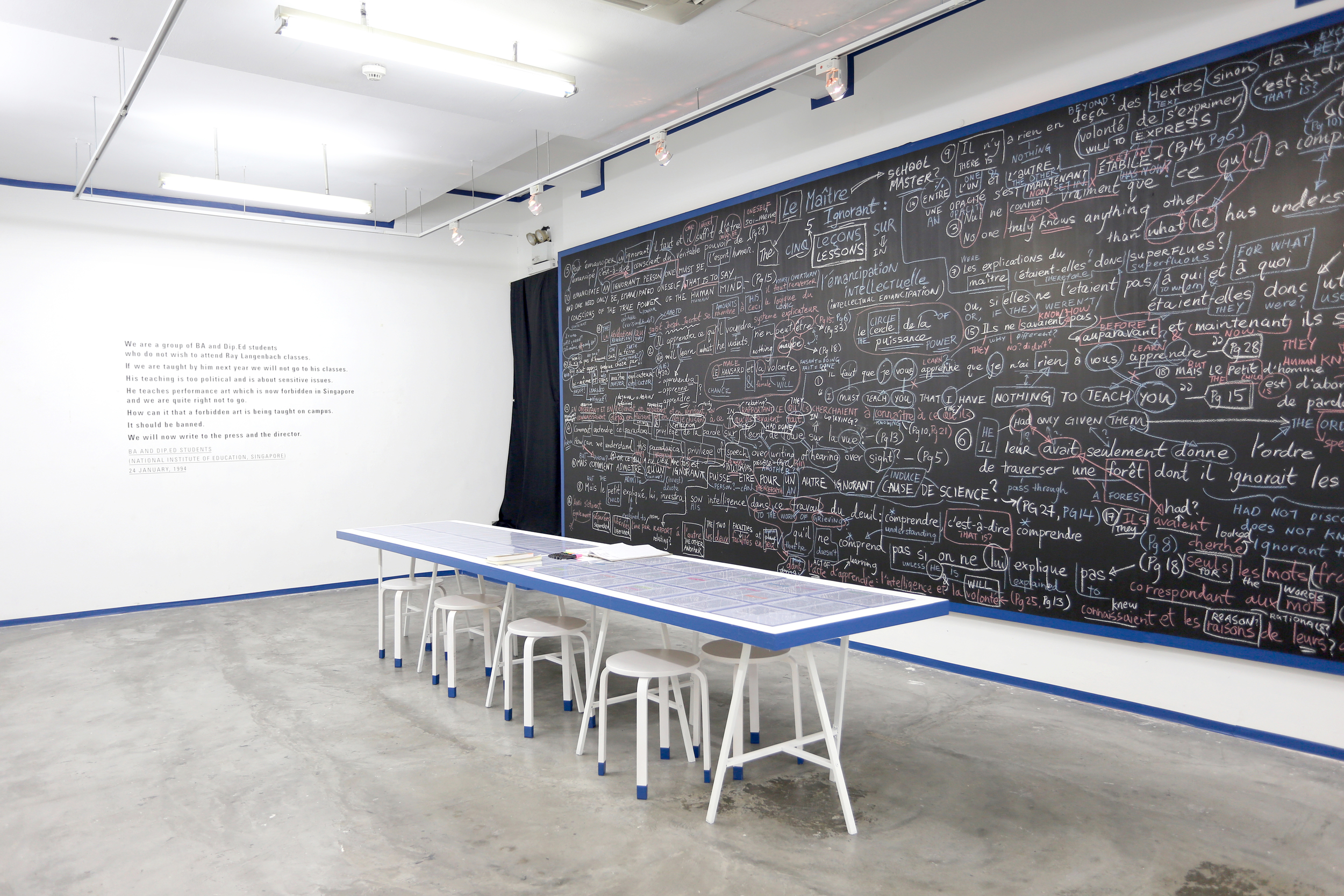

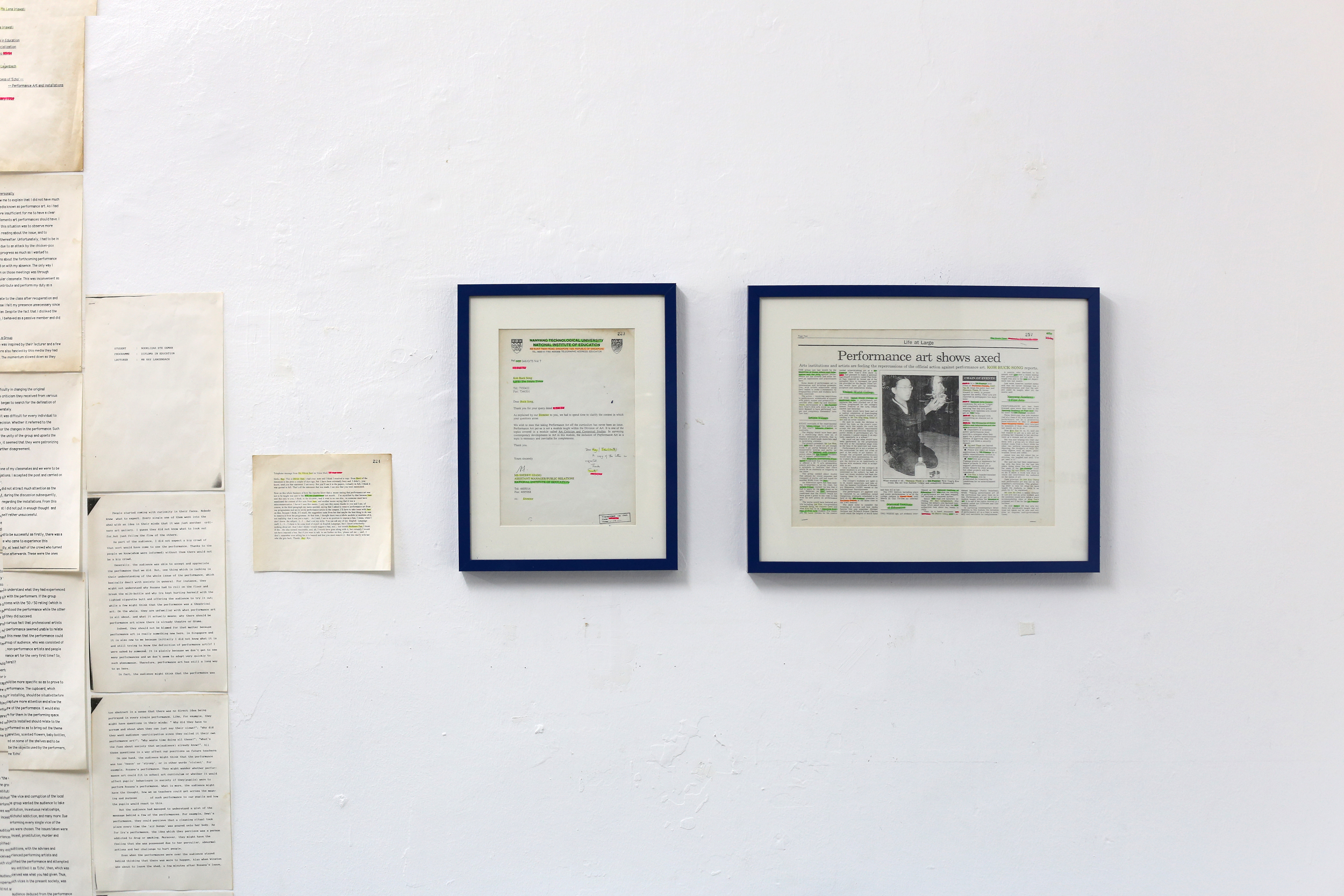
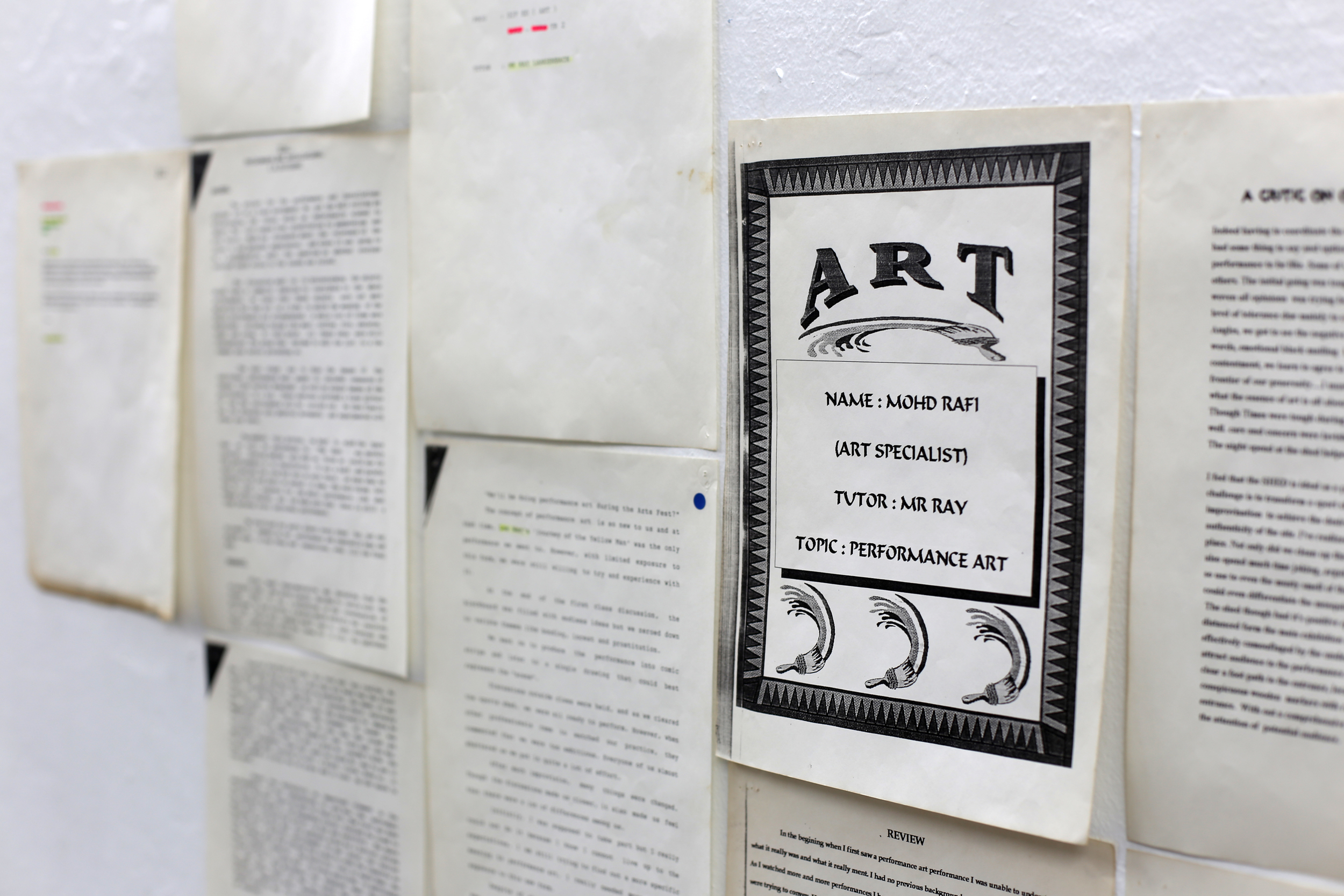
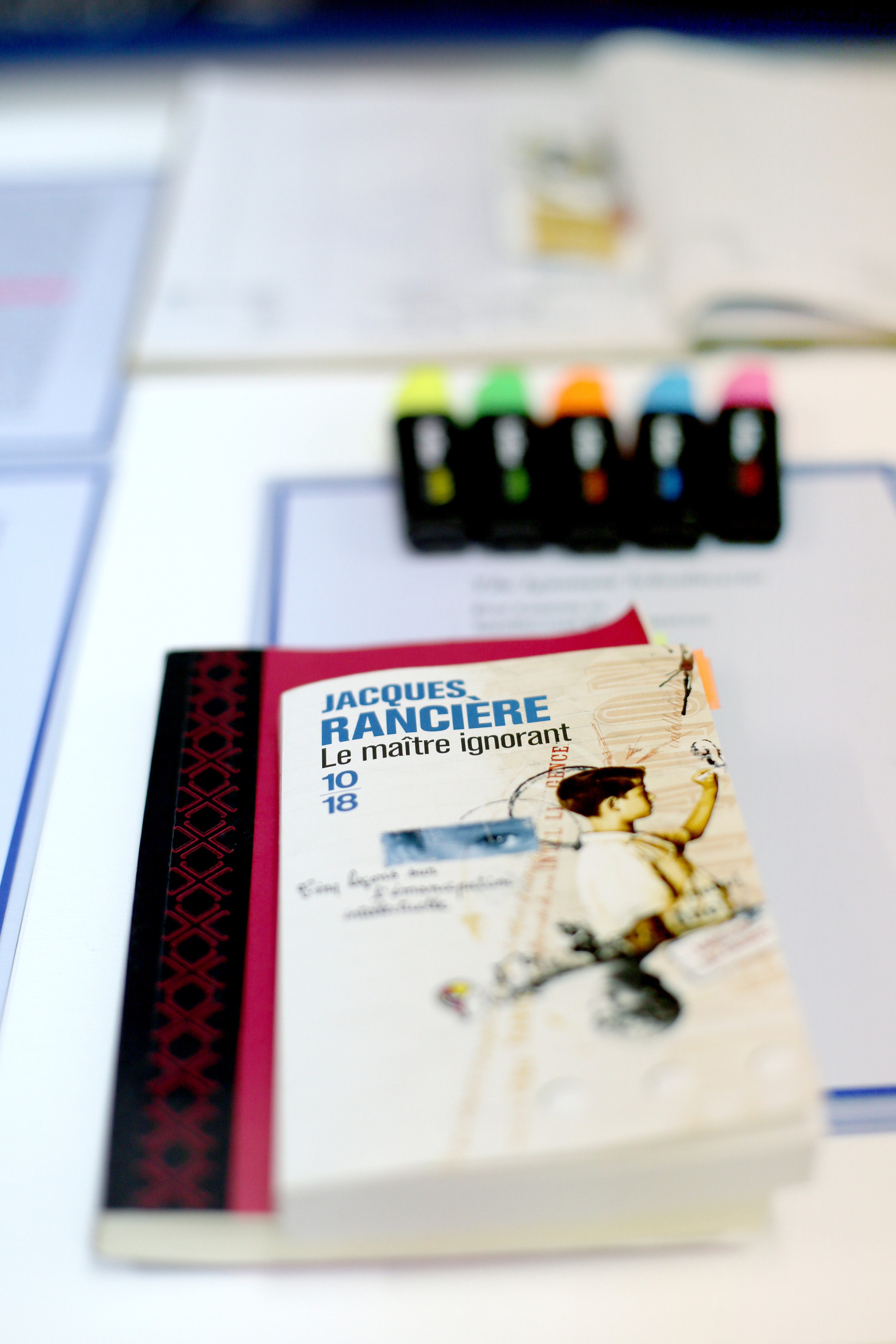

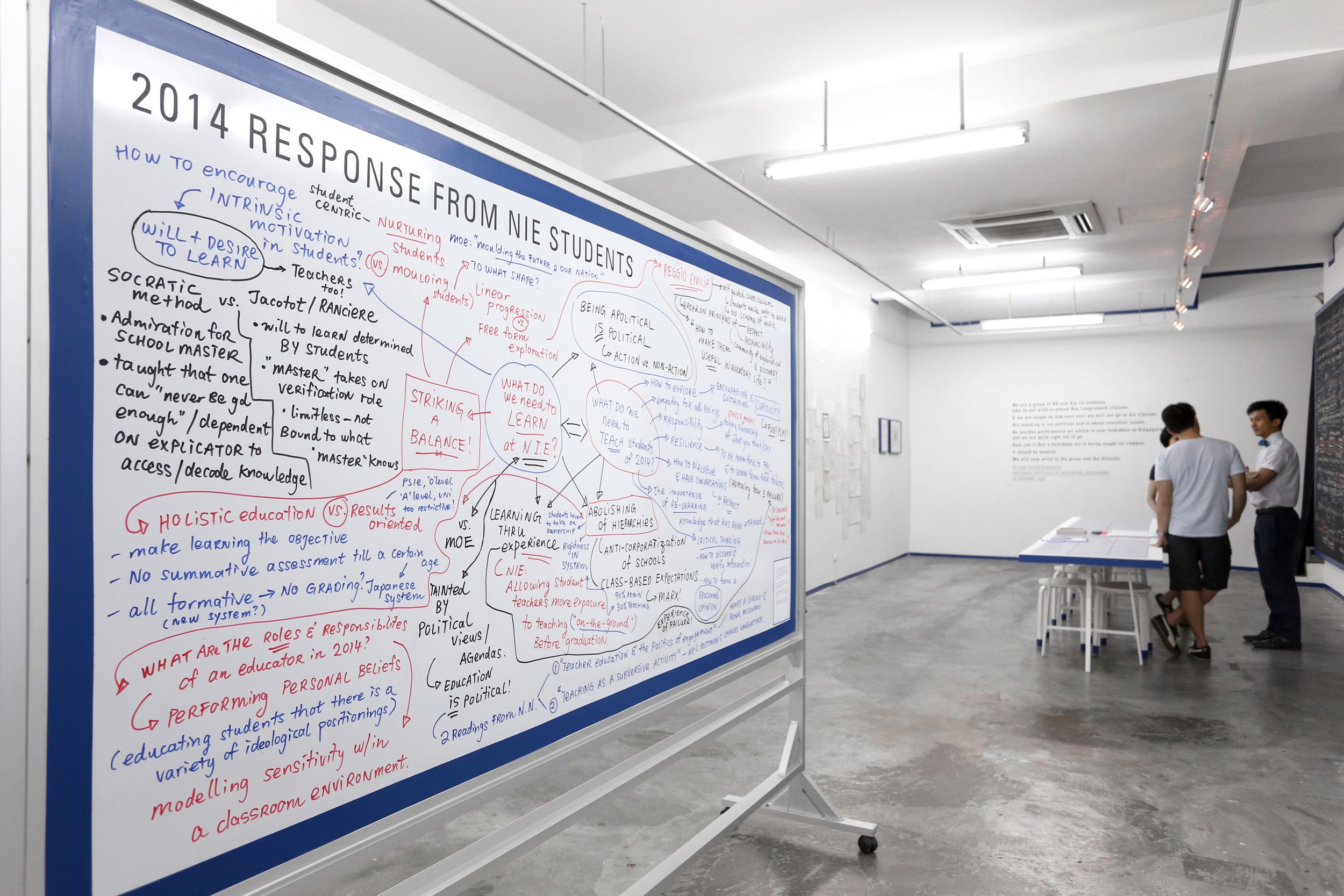
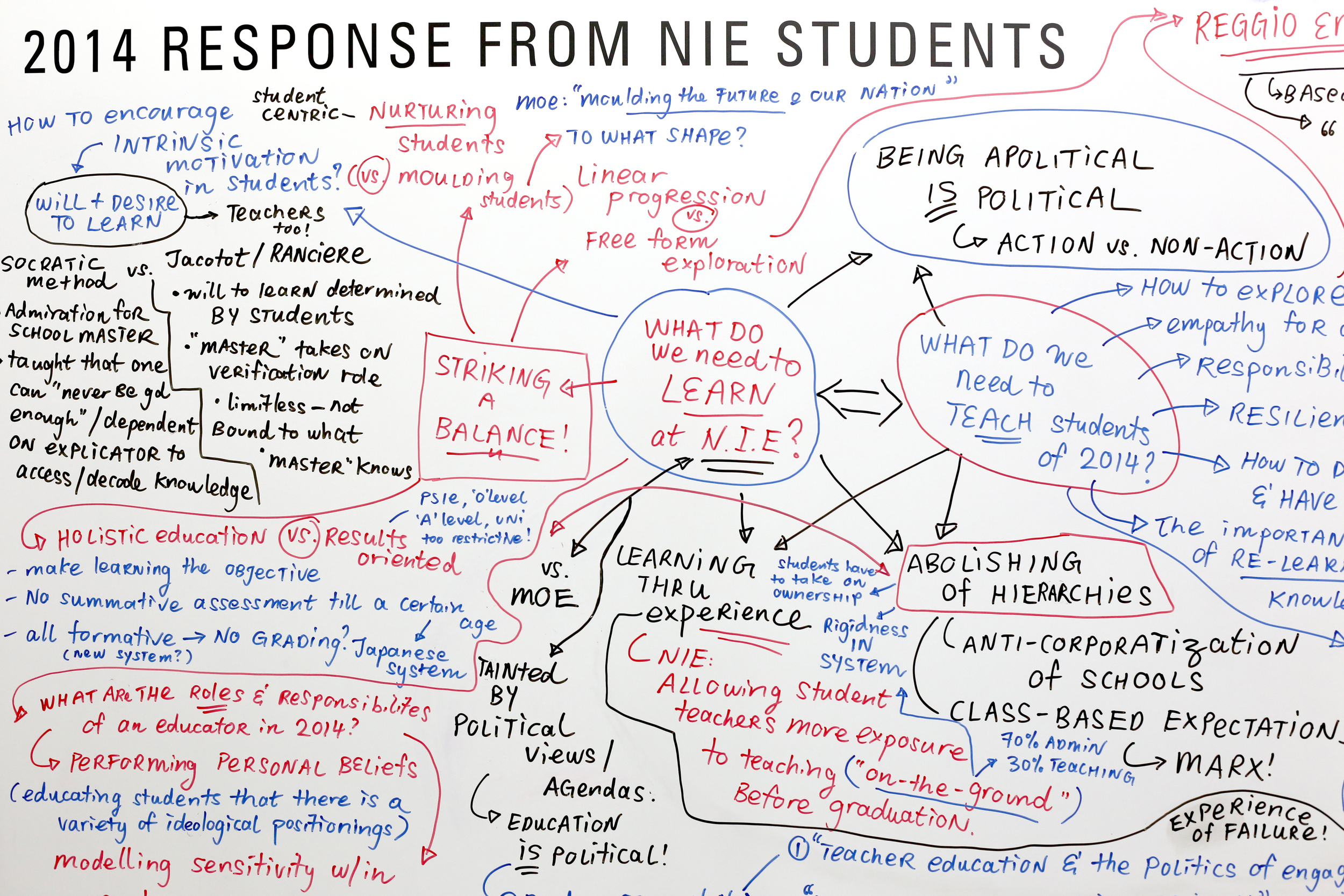
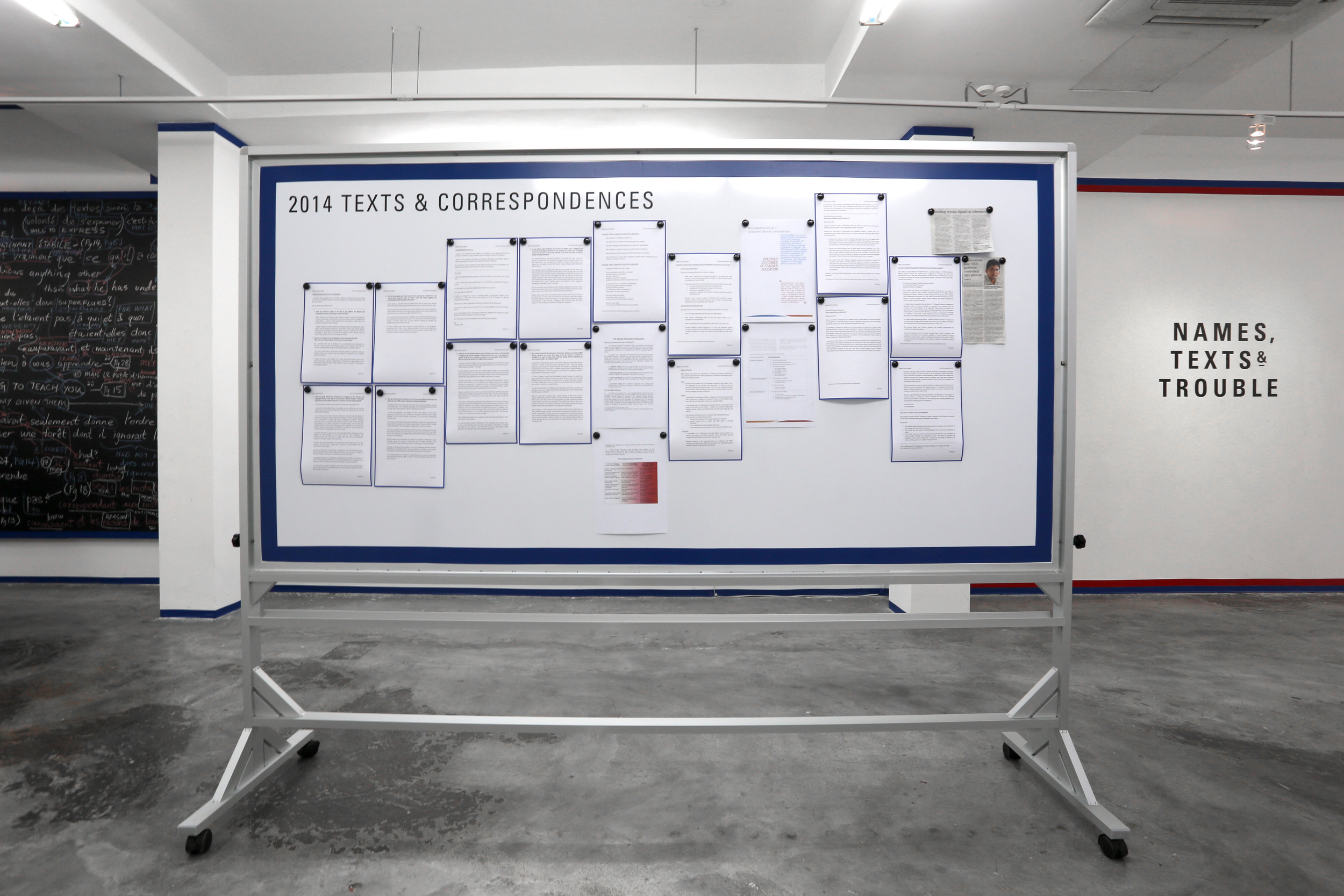
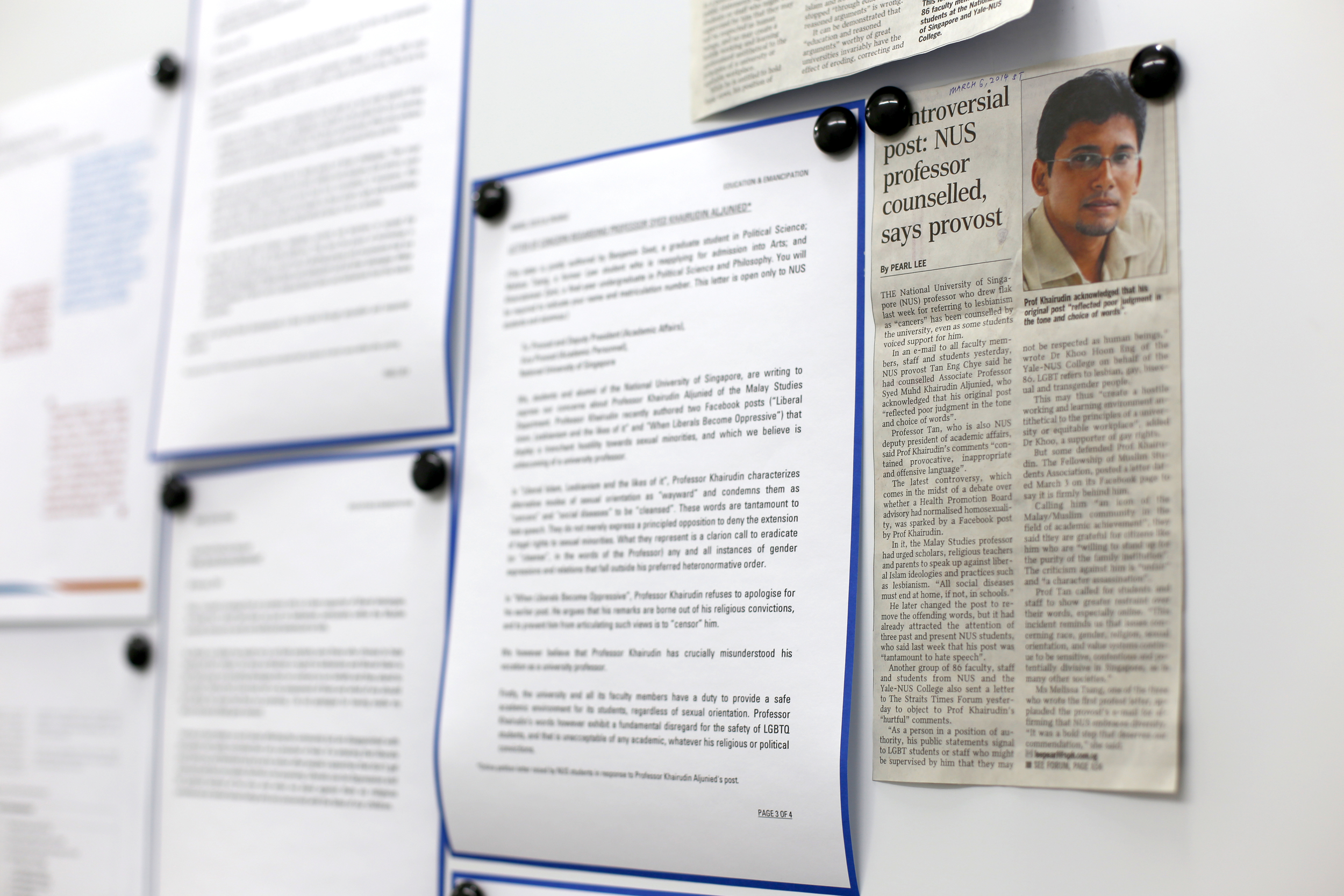

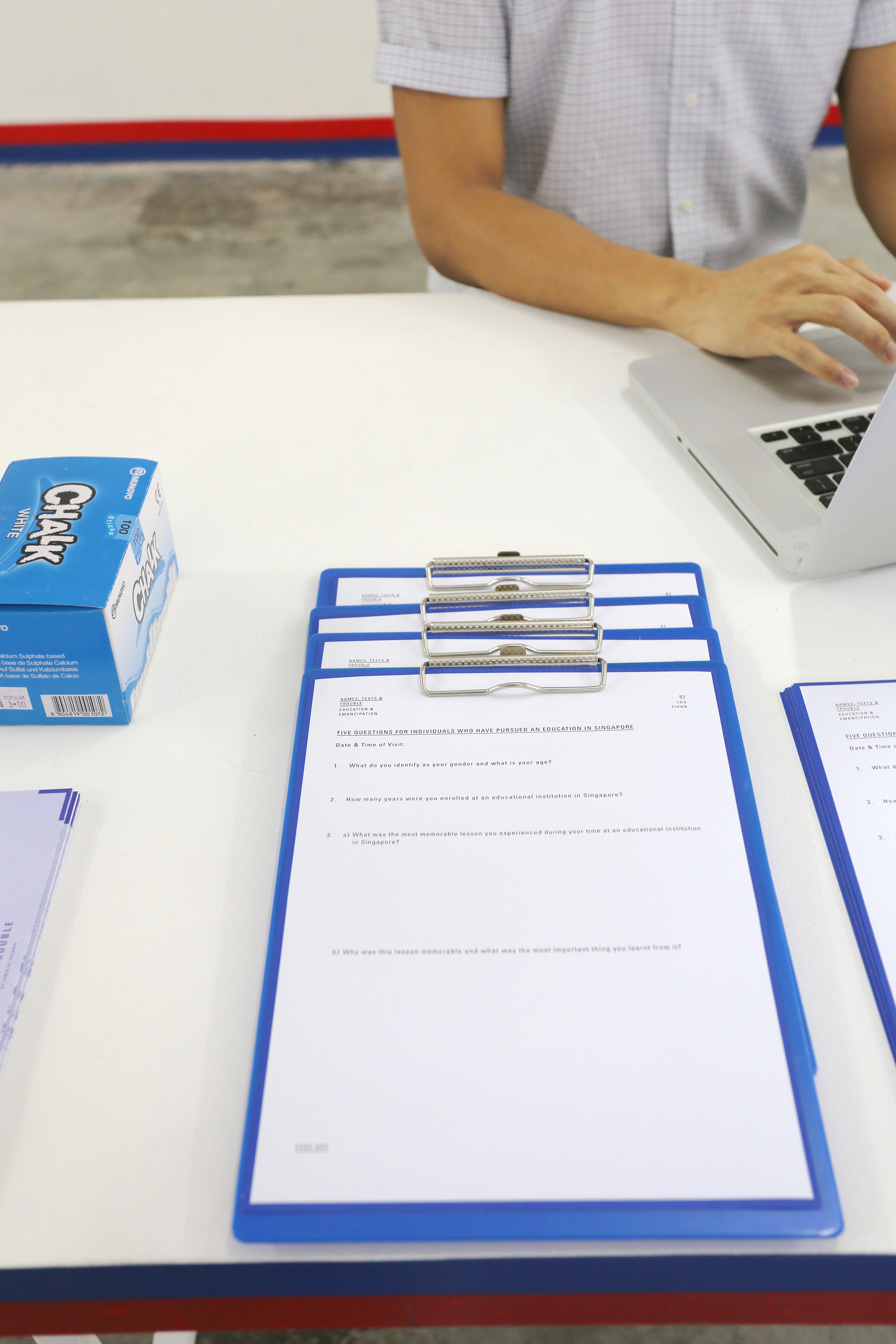
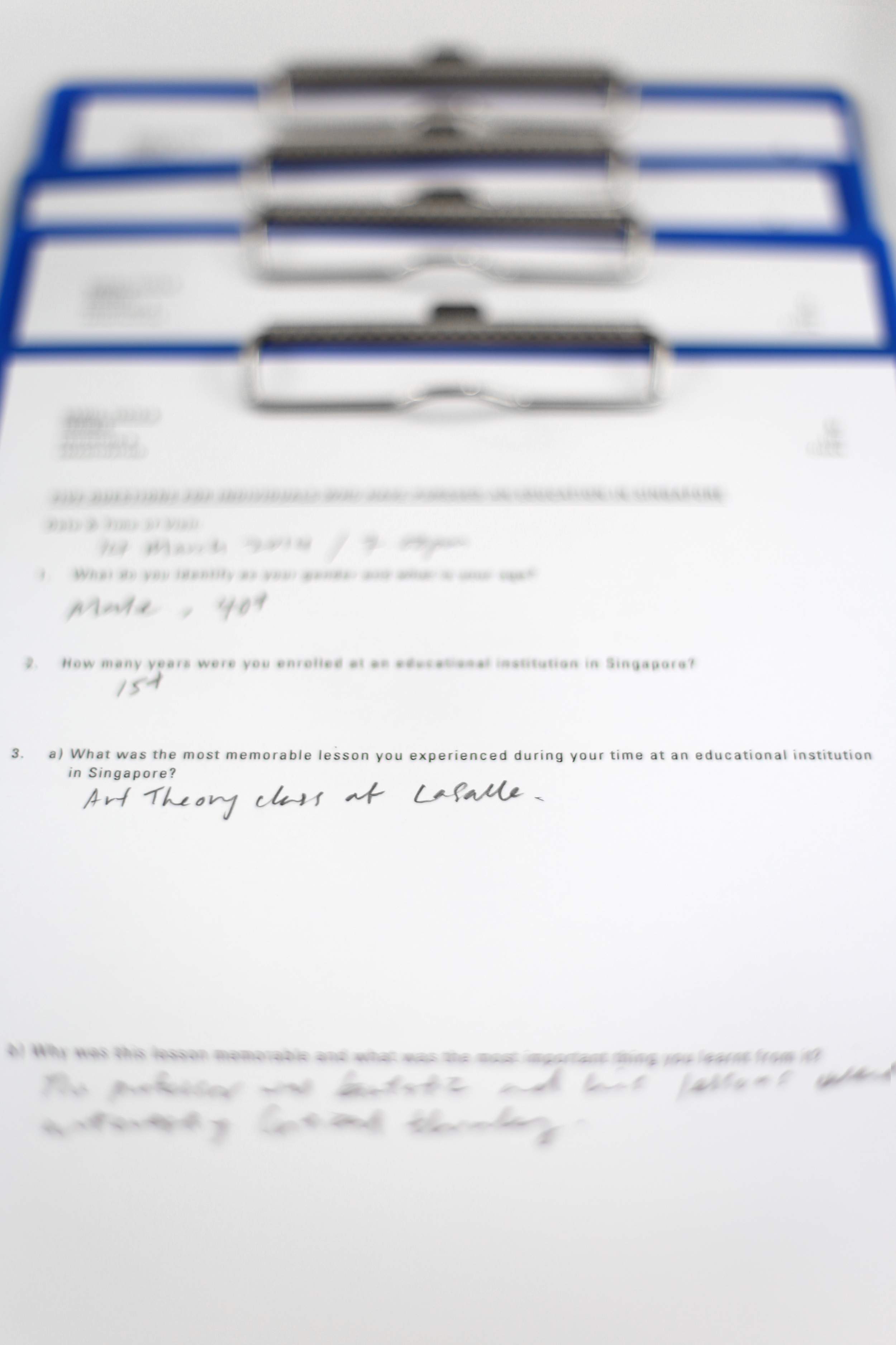
The Artists' General Assembly: Education & Emancipation (2014) – Exhibition
part of Names, Texts & Trouble, a joint exhibition with Tania De Rozario
supported by The Substation's Associate Artist Research Programme
7 to 16 March, 2014
The Substation Gallery, Singapore
On 24 January, 1994, National Institute of Education lecturer Ray Langenbach received an anonymous letter in his mailbox that called for the removal of Performance Art from the Visual Art syllabus, and a boycott of classes featuring this ‘forbidden art'.
We are a group of BA and Dip.Ed students who do not wish to attend Ray Langenbach classes.
If we are taught by him next year we will not go to his classes.
His teaching is too political and is about sensitive issues.
He teaches performance art which is now forbidden in Singapore
and we are quite right not to go.
How can it that a forbidden art is being taught on campus. It should be banned.
We will now write to the press and the director.
BA and Dip.Ed students (National Institute of Education, Singapore)
24 January, 1994
This letter followed the National Arts Council's (NAC) statement on the restriction of the licensing and funding of performance art in Singapore on 22 January, 1994. NAC's statement was in turn triggered by media reports of two performances at the Artists' General Assembly, one of which was Josef Ng's Brother Cane.
Education & Emancipation is the second phase of a two-year research project that delves into the periphery events surrounding the Artists’ General Assembly. The focus for this phase is on the gesture of proscribing politically-charged art in 1994 and an attempt to measure its impact on arts education in our present time.
The three main questions the exhibition proposes are as follows:
- Do educators have the responsibility to trigger ideological emancipation in their charges, and how do they gauge the ethical and moral repercussions of the position they choose to perform?
- How do the roles of an artist and educator intertwine, and how can one role potentially influence the creative re-visioning of the other?
- Can the transference of emancipation be offered up as a gift by the educator or does it necessitate a violent gesture of possession enacted according to the volition of his charges?
Using Jacques Rancière’s 1981 text The Ignorant Schoolmaster: Five Lessons in Intellectual Emancipation as a critical foundation, the exhibition includes a durational performance with the artist manifesting an unconventional teaching method proposed by Joseph Jacotot in 1818.
Rancière not only proposes that can one teach something that one does not know, but most importantly that only through not knowing what one is to teach can true intellectual emancipation occur in both the educator and his charges.
Photo by Samantha Tio
Zihan interpreted the teaching methodology by attempting to learn French throughout the exhibition via the comparative analysis of both the English and French text of Jacques Rancière’s 1981 text The Ignorant Schoolmaster: Five Lessons in Intellectual Emancipation. The blackboard served as a record of his progress.
During the exhibition run, Zihan invited a group of current National Institute of Education, Singapore students who are in training to become art teachers to the exhibition space for a dialogue session and discussion.
A whiteboard in the exhibition records the trainee teachers' response to the exhibition. Other documents displayed in this text-based exhibition includes surveys conducted with arts educators on their pedagogical ethos and the teaching of art with a social, political and cultural reference, an anonymous interview with a present Ministry of Education art educator on her opinion of the state of art education, an interview with Ray Langenbach on his memory of the incident, along with the Teacher's Creed and Teacher's Pledge by the Ministry of Education, Singapore.
Exhibition Design - Kaleb Loh
